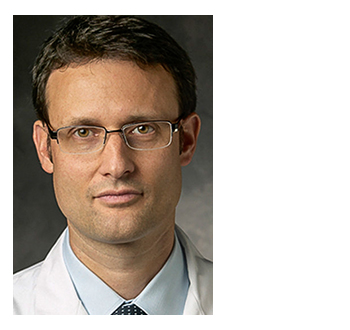Neurosurgery
Every mistake in neurosurgery can have serious consequences. That is why precise planning is necessary so that the surgeons know exactly what to do. To avoid damages, it is also important to visualize as accurately as possible what exactly happens at the end of the endoscope. Precise planning and perfect vision could, in addition, be complemented by a system that can autonomously recognize and protect vital tissue types such as blood vessels and nerve tracts. In this way, neurosurgery could be made even safer than it already is today. Therefore, researchers at the DBE are conducting research in all three fields – planning, visualization and tissue-detection – under the supervision of the neurosurgeon Raphael Guzman from the University Hospital of Basel.
To plan their operations, Guzman and his colleagues at the Department of Neurosurgery are using SpectoVR, a virtual reality system developed by Philippe Cattin and his team at the DBE. In a collaborative effort, they are further developing this system and adapting it to the clinician’s needs. Currently, the focus lies on new visualization tools inside the VR and a robot-based haptic feedback to enhance surgery simulation. The neurosurgeons are using SpectoVR also to prepare patients for surgery, see a film here (20:45), and to introduce medical students to surgical practice. These applications are also continuously improved in cooperation with researchers.
Together with Georg Rauter from the DBE, Guzman is developing novel optical systems for neurosurgical endoscopes which are to be used in the minimally invasive laser robot of the MIRACLE team, but which could also be of great benefit for traditional approaches. In the same project context, Guzman is working with Azhar Zam on systems providing measurements of the depth of cutting and tissue recognition beyond the bone – essential safety features for this technology.
The collaboration between the DBE and the Department of Neurosurgery at the University Hospital is a perfect example for the translational character of the research at the DBE: The clinicians of the University Hospital discuss their problems and desiderata with the researchers, who then propose initial approaches. In a circular or pendulum movement, solutions are then developed that exploit the possibilities of state-of-the-art research and at the same time provide effective help for the clinicians. In the case of SpectoVR, this cooperation takes place within the framework of the clinical application itself.

Prof Dr Raphael Guzman
Head of Neurosurgery Group
Hegenheimermattweg 167B/C
4123 Allschwil
Switzerland
